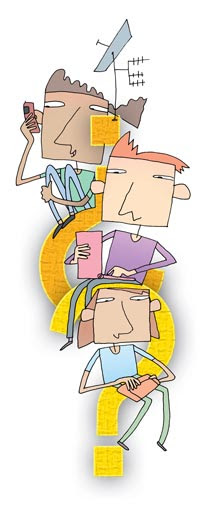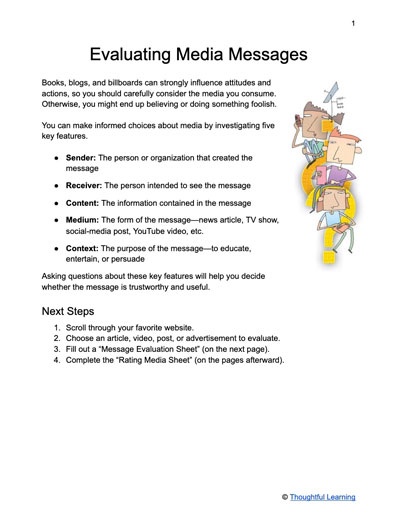
Fake news. Biased information. Divisive commentary. Today’s media landscape blurs the line between fact and fiction. Our students are left to sort out the truth.
Passive reading and viewing won't do. Students need to learn media literacy—the ability to access, analyze, evaluate, and create media critically and responsibly.
This essential 21st century skill builds better learners and citizens.
Featured Activity: Evaluating Media Messages
Teach your students to evaluate the key parts of any media message.
Download the PDF or copy the Google Doc.
| Find more resources for teaching media literacy. |
Teacher Support
Consider this support as you implement the lesson.
Level
Grades 6-12
Learning Objectives
By completing this activity, students will . . .
- Recognize the five parts of any media message: sender, receiver, content, medium, and context.
- Make critical judgments about media.
- Evaluate the five parts of a sample media message.
- Rate the same message based on its five parts.
- Discuss the components of media.
Teaching Tips
- Emphasize that there are no "right" answers in this activity. The purpose is to think more critically about the components of media messages and how the parts interact.
- Complete the activity at least once as a class before having students complete it individually (or in pairs). Share a variety of media with different purposes. You might choose one or more of the following:
- A straight news story, such as an article or video from an established source
- An advertisement, such as a Google Ad or sponsored YouTube video
- A social media post (if age appropriate)
- A viral video (if age appropriate)
- Use this activity as a jumping off point for discussing media literacy. Find out what media your students enjoy. Discuss your own media habits.
